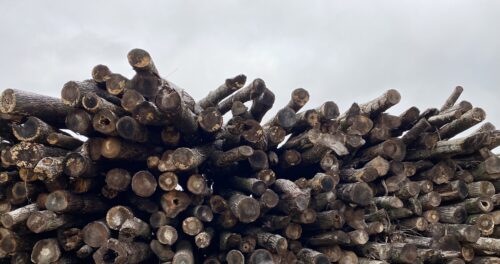Photo Courtesy of Nyla Marcott.
A substance that was previously viewed as trash might be treasure. Lignin, a byproduct of paper production, has been transformed from burdensome waste to a key solution for gas storage, air purification, and water treatment. The substance is a type of polymer that provides structure to plant cell walls and is the world’s second most abundant organic product. In a method known as kraft, paper producers separate wood pulp from lignin, which is discarded or burned for energy, creating harmful environmental consequences.
Recently, Oleg Tkachenko and Tetyana Budnyak, researchers from Uppsala University in Sweden, developed a method to transform lignin into activated carbon that contains micropores capable of absorbing unwanted or dangerous materials from the environment. The research was conducted in collaboration with Yale professor Julie Zimmerman’s lab. “Using readily available, low-cost resources like biowaste for producing activated carbons presents a compelling eco-friendly alternative,” Budnyak said. “This approach not only addresses the environmental concerns but also taps into the untapped potential of plant-based biomass and by-products from crops and wood industries.”
Researchers previously considered activated carbon a potential tool to improve air and water filtration due to its ability to absorb organic and inorganic materials, such as pharmaceuticals and pesticides. The production of activated carbon, however, was not environmentally friendly because it relied heavily on fossil fuels. The team developed a doping process—the introduction of impurities to change chemical properties—that uses carbon-rich lignin combined with nitrogen at high temperatures to produce a product called N-doped activated carbon (N-AC). Nitrogen is an important component of the product because it creates proper charge and pore characteristics that are essential for N-AC’s absorption ability. “We’re finding new life for materials that would otherwise contribute to CO2 [carbon dioxide] emissions,” Budnyak said. “By enhancing this material with nitrogen and providing it with exceptional porosity, we are creating more efficient and effective solutions for clean water and cleaner air.”
N-AC’s ability to absorb unwanted chemicals and gasses from the environment presents numerous opportunities to improve drinking water and air quality. Once materials are absorbed into N-AC, they can be transported to a desired storage or disposal facility to be released from the N-AC. “CO2 is easily extracted from N-doped carbon under low pressure, and the collected gas could be stored in a special tanker waiting for further application,” Tkachenko said. “[R]eusability was observed at a high level without visible decay after 10 consequent adsorption−desorption cycles.” The findings indicate that N-AC can be reused multiple times to absorb and dispose of chemicals or gasses. N-AC’s ability to continue to function well even when repeatedly used increases its environmental benefits and lowers potential production costs.
The team’s work to find the most effective method to produce N-AC was a challenging process, but their discoveries will improve how water and air are purified. The researchers spent months modifying production characteristics and identifying conditions that
would produce N-AC with optimized absorption. “This means better water filters for your home, more effective filters for […] wastewater producers, and more effective air purifiers for cleaner indoor air and industrial emissions,” Budnyak said. “In essence, our findings on N-doped activated carbon are about creating a cleaner, healthier environment and advancing technologies that benefit us all, using resources we already have but often overlook.”

